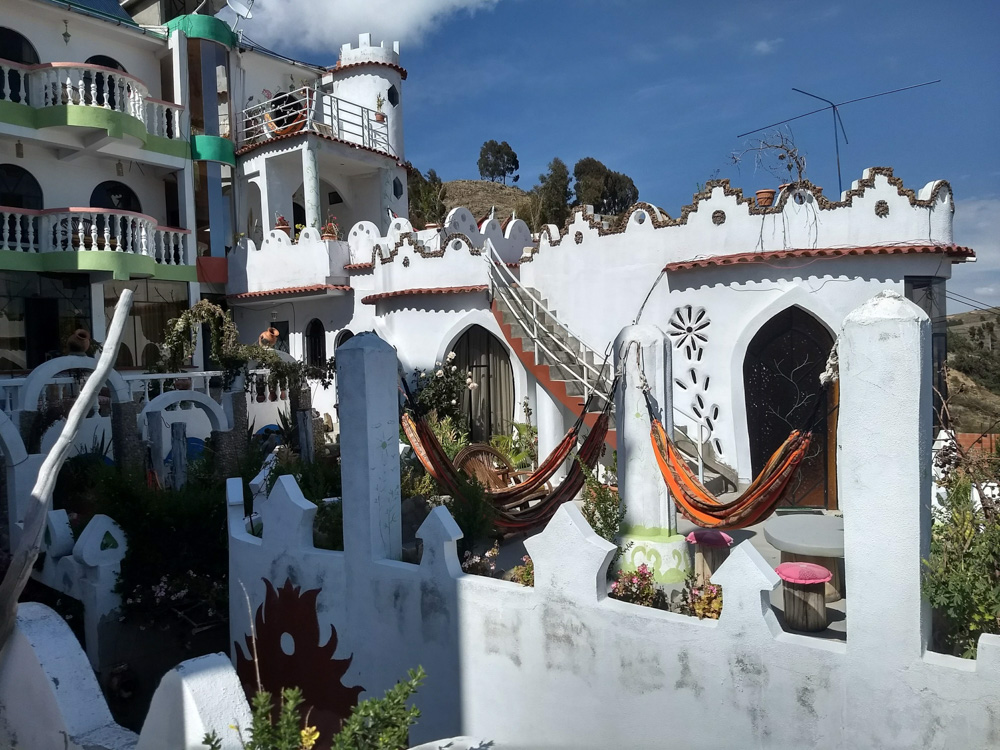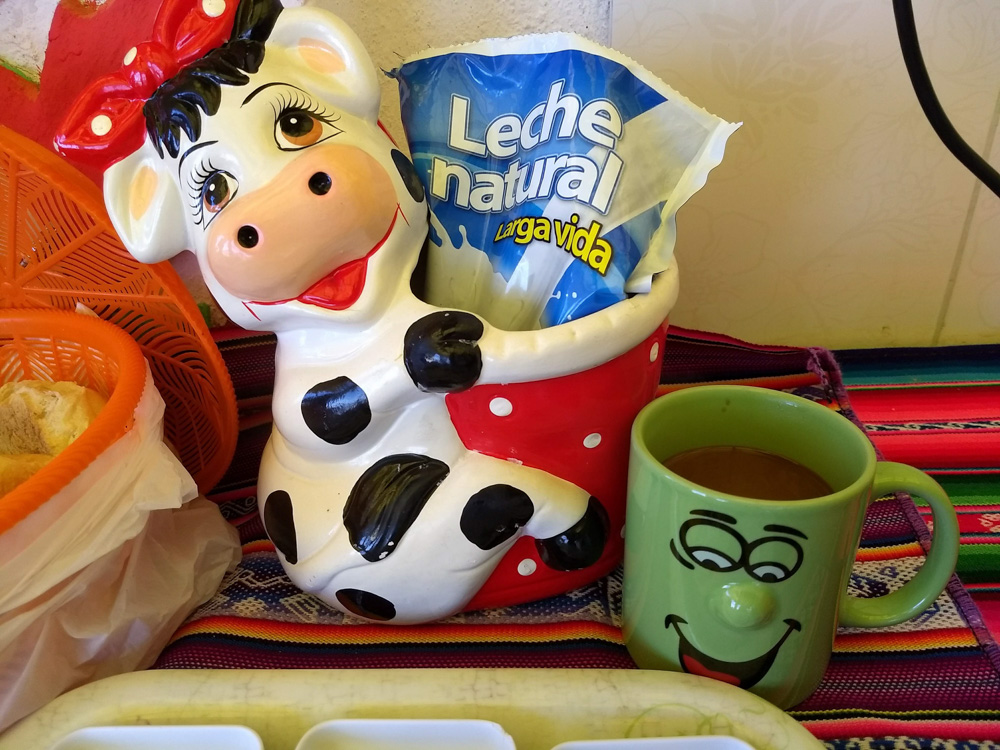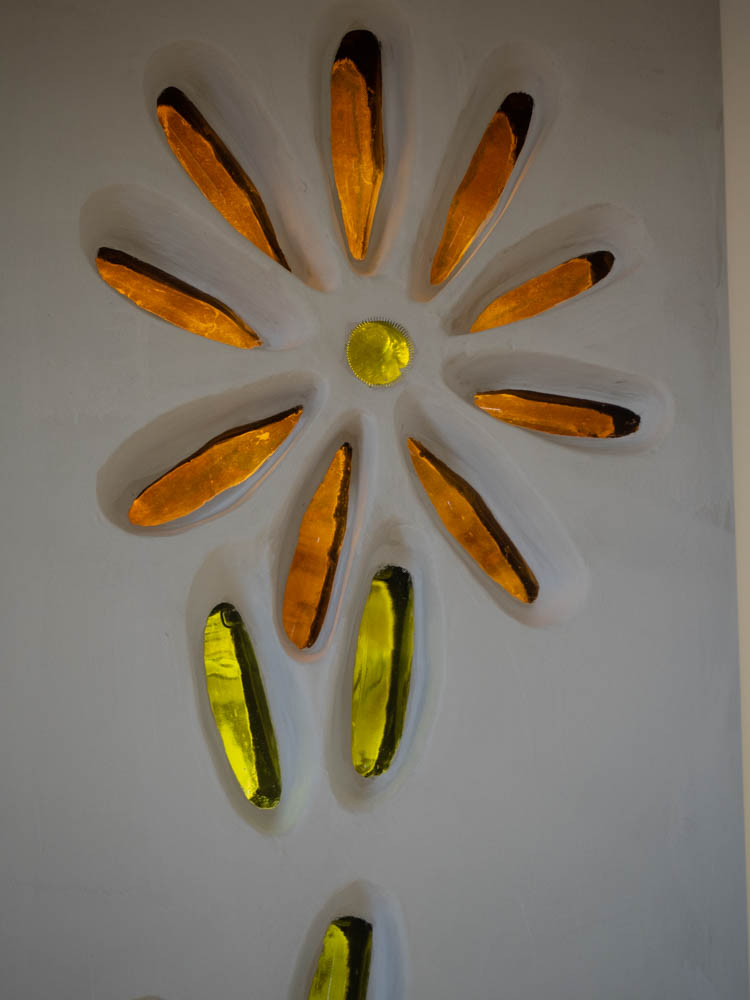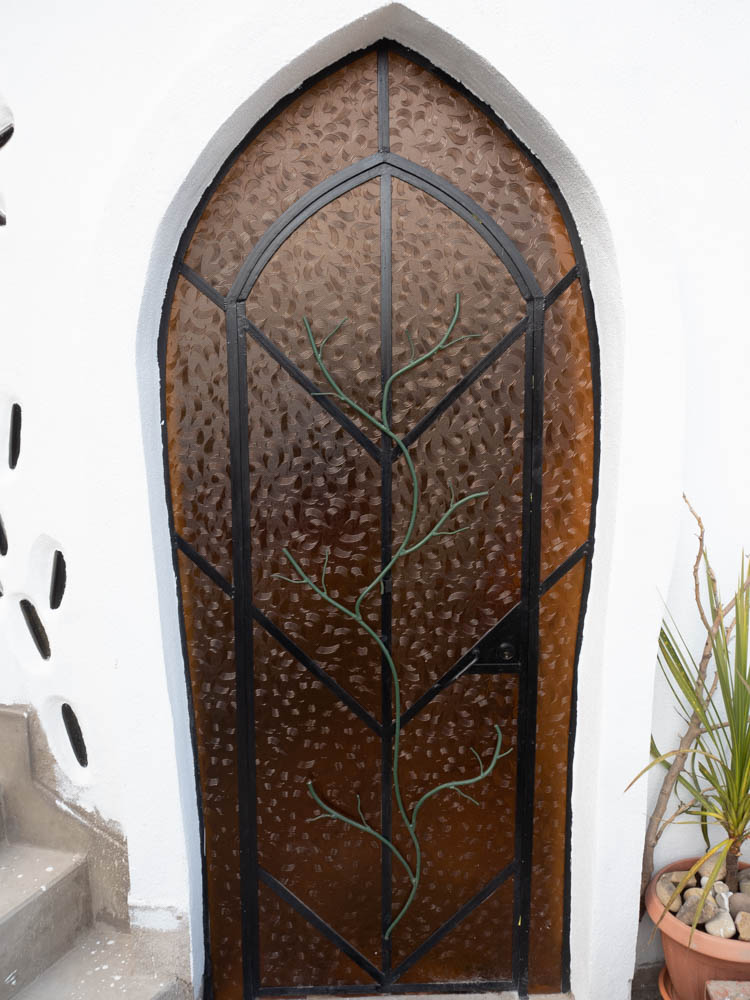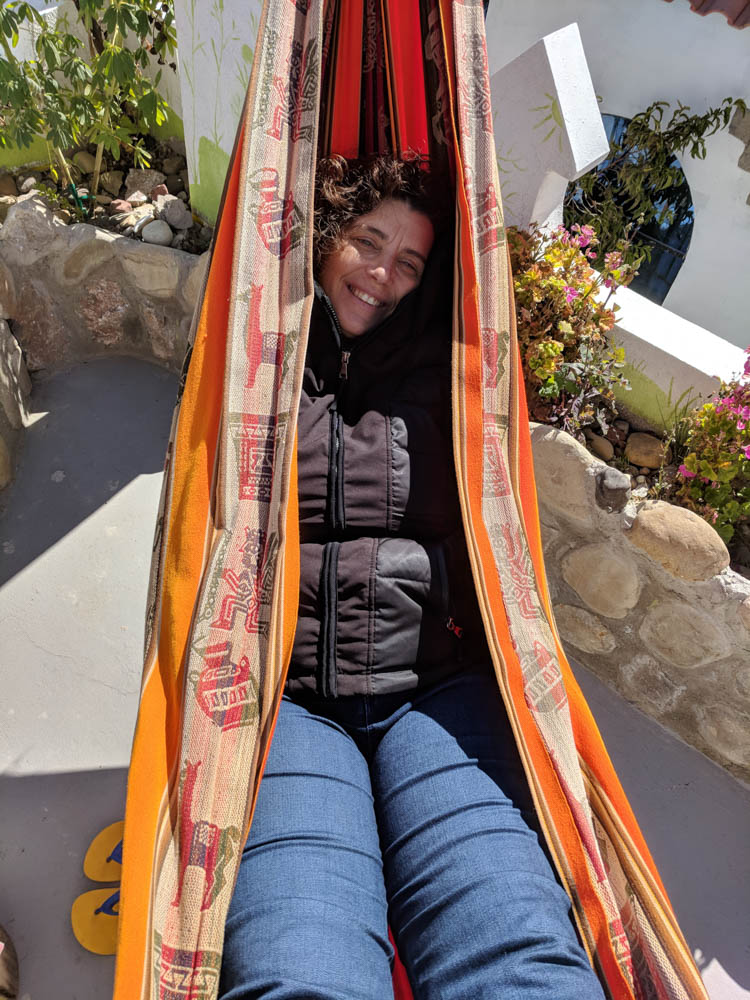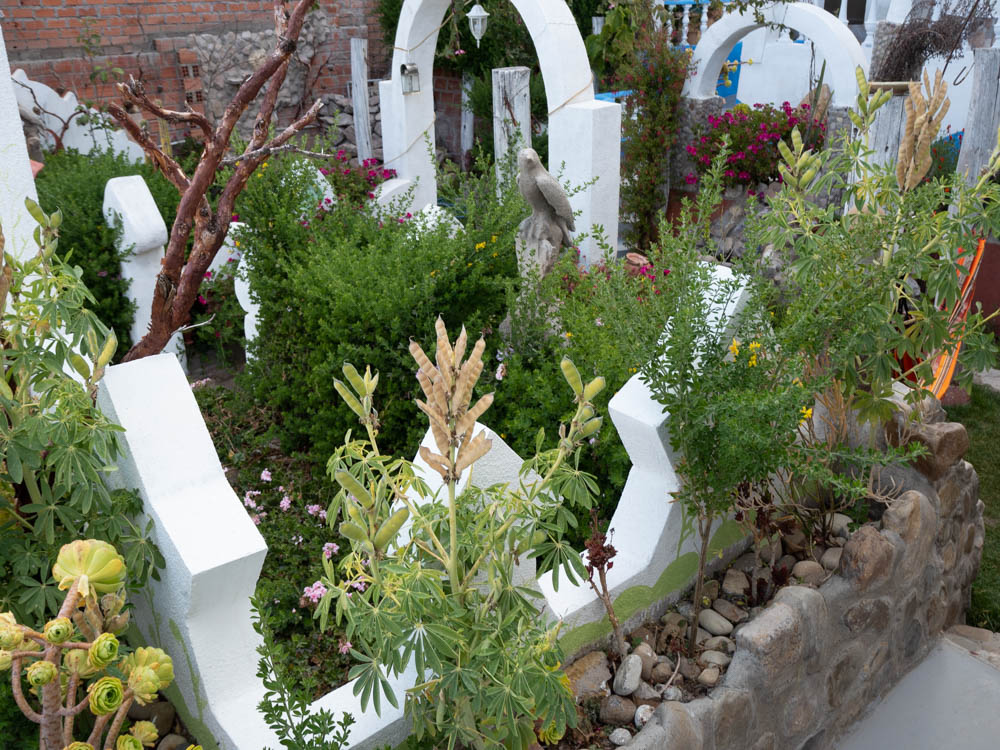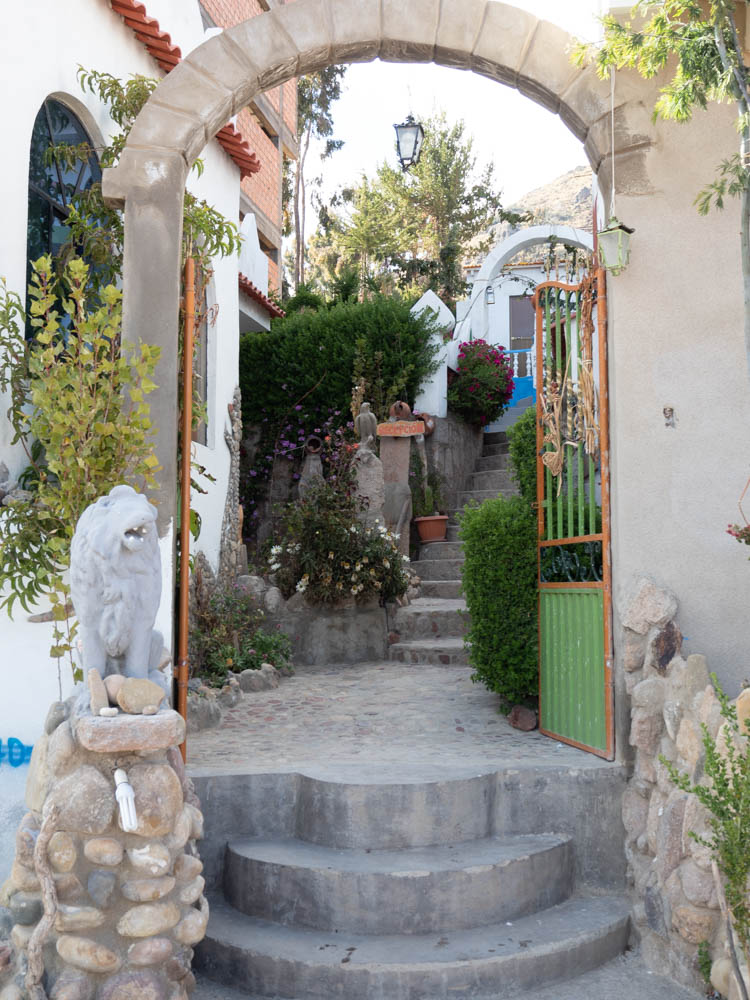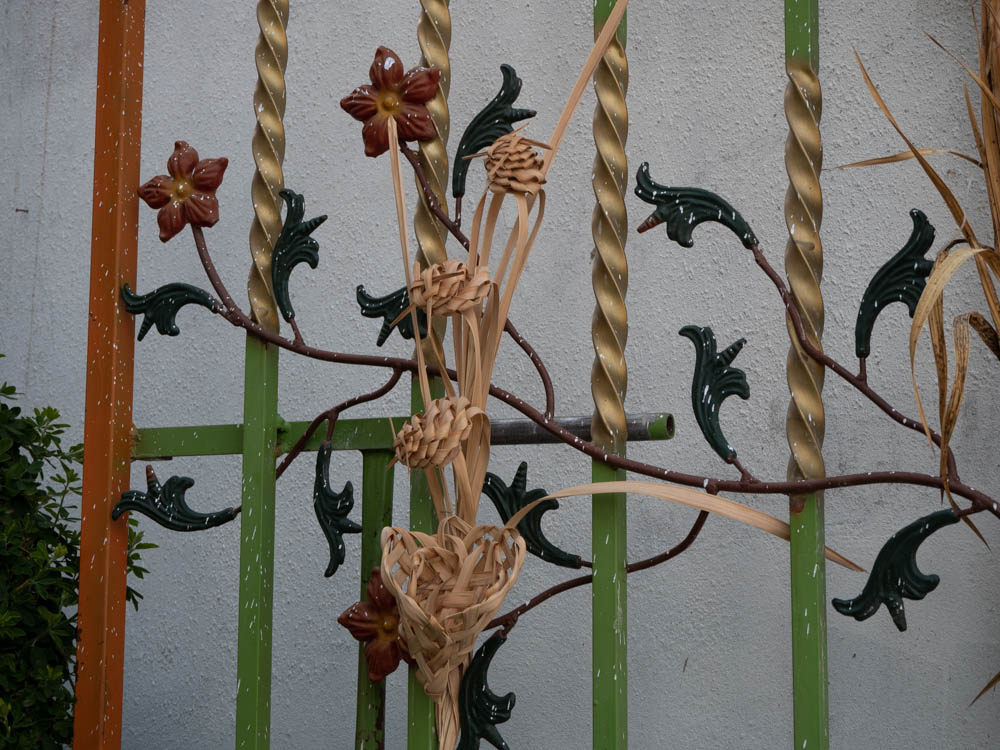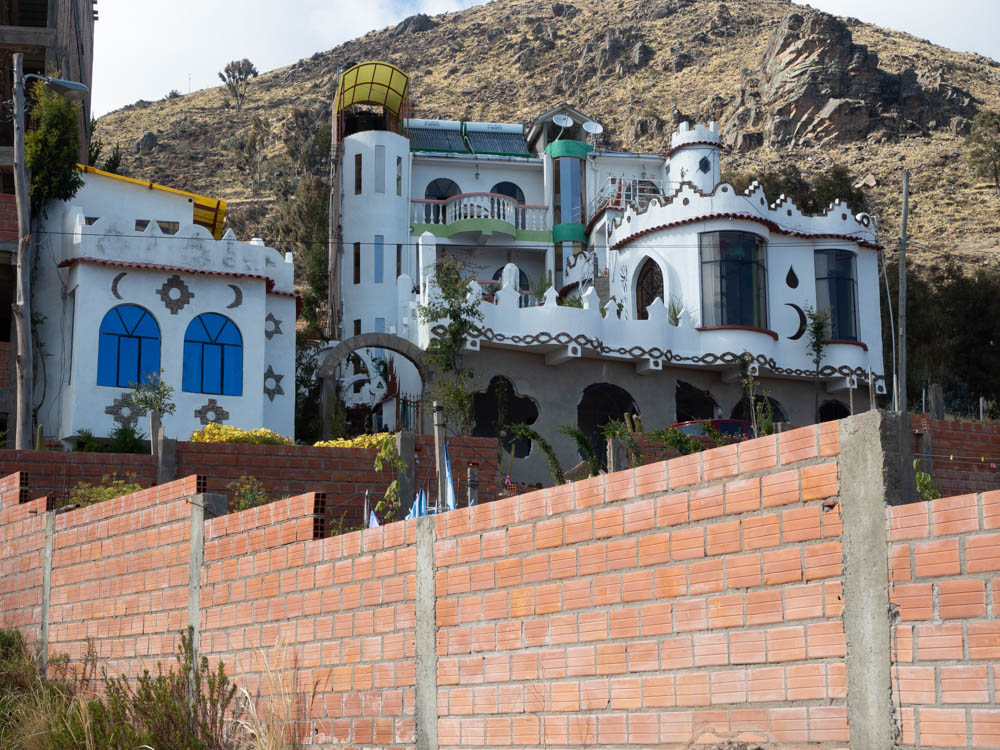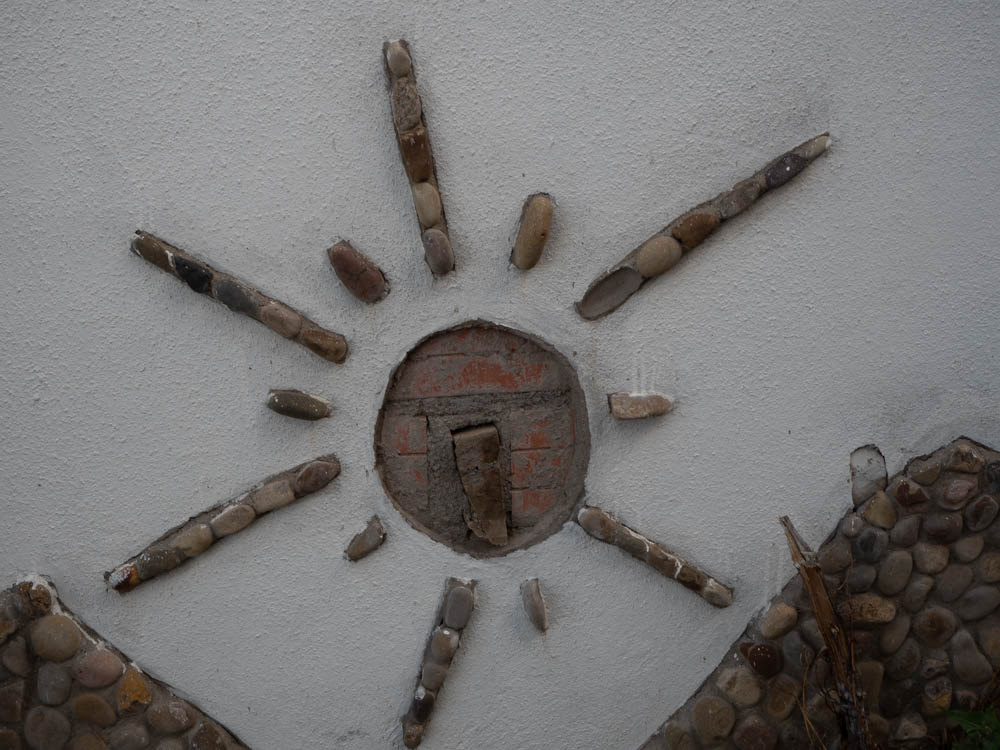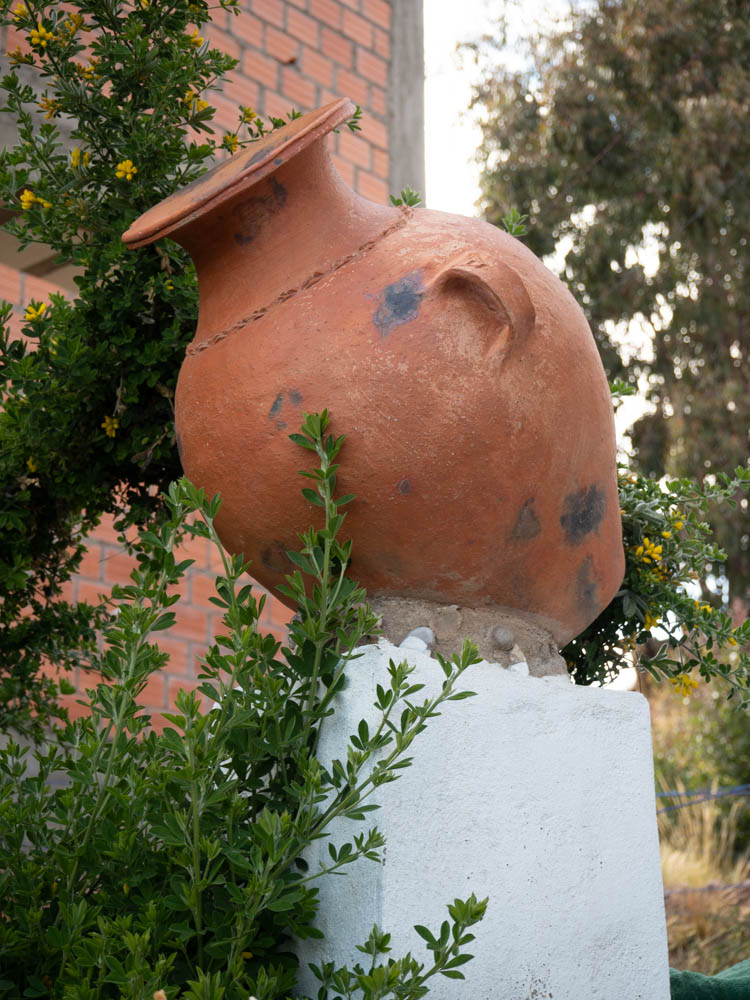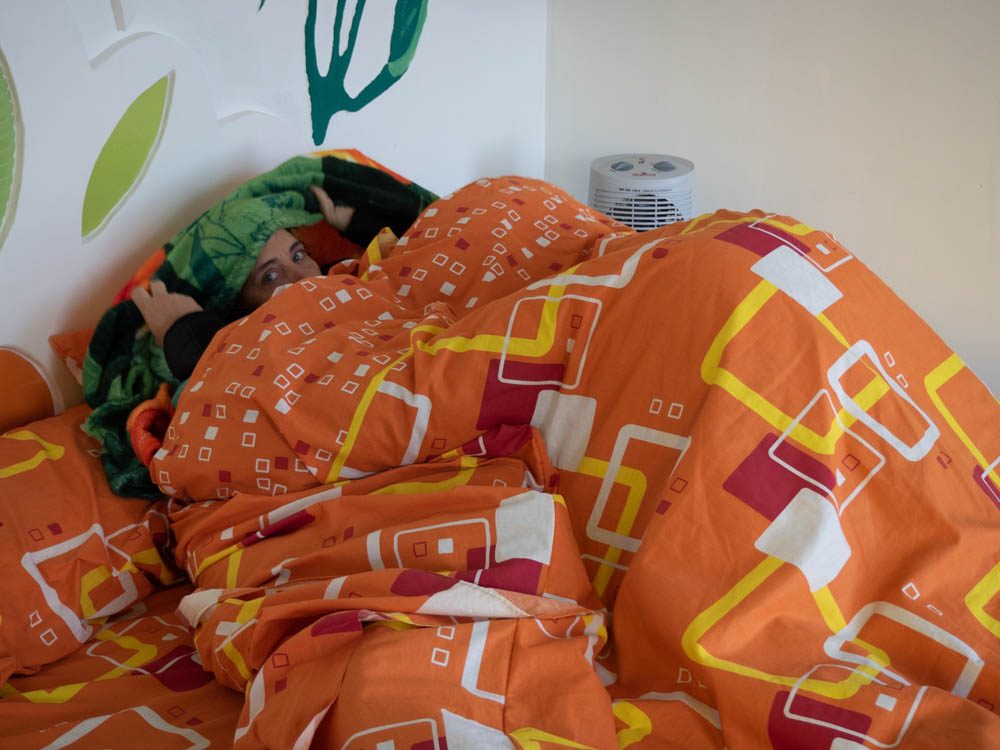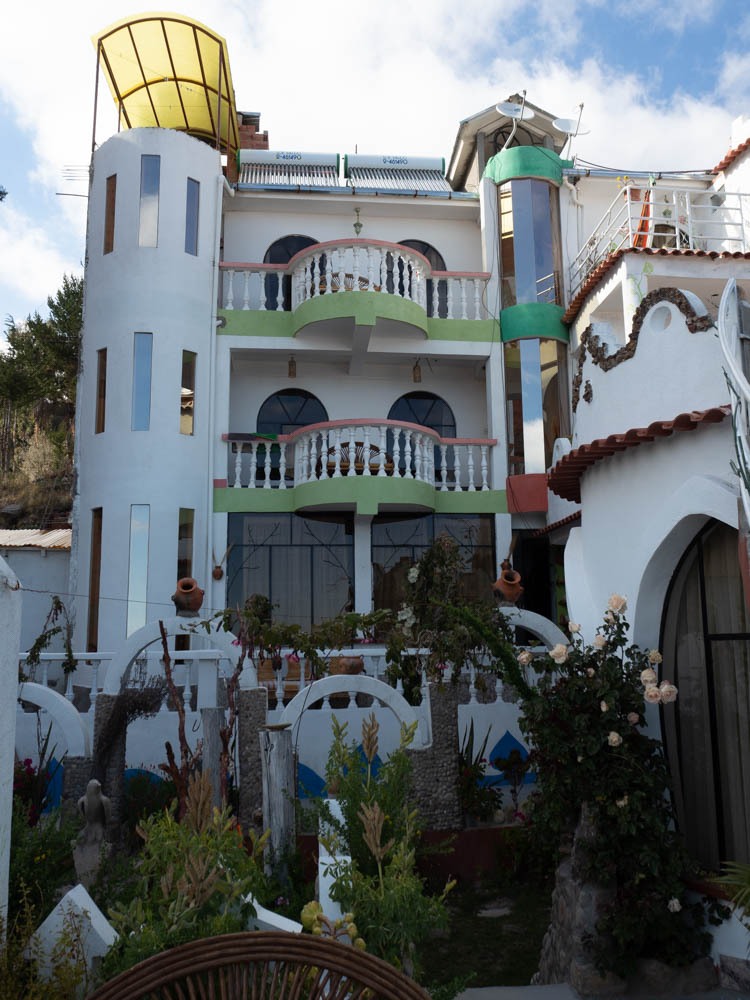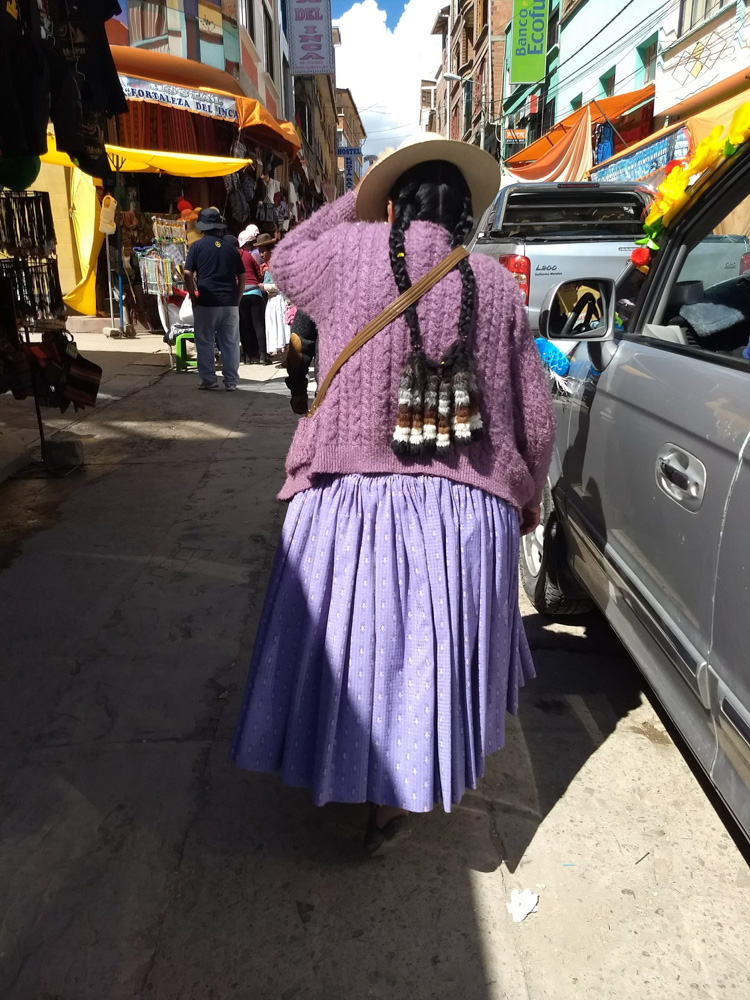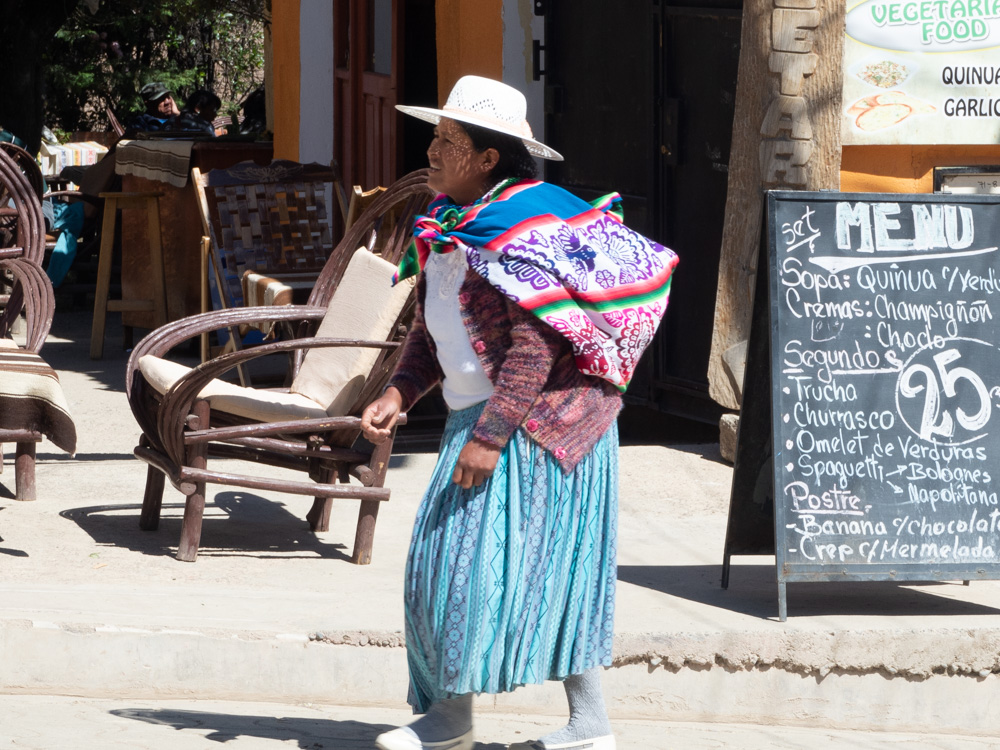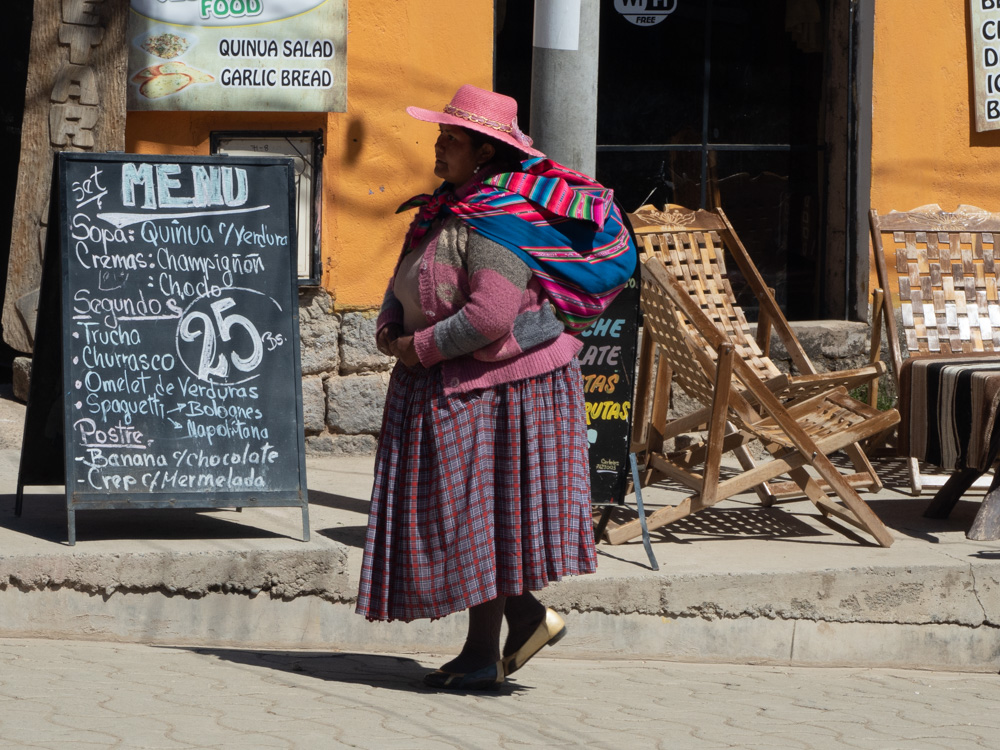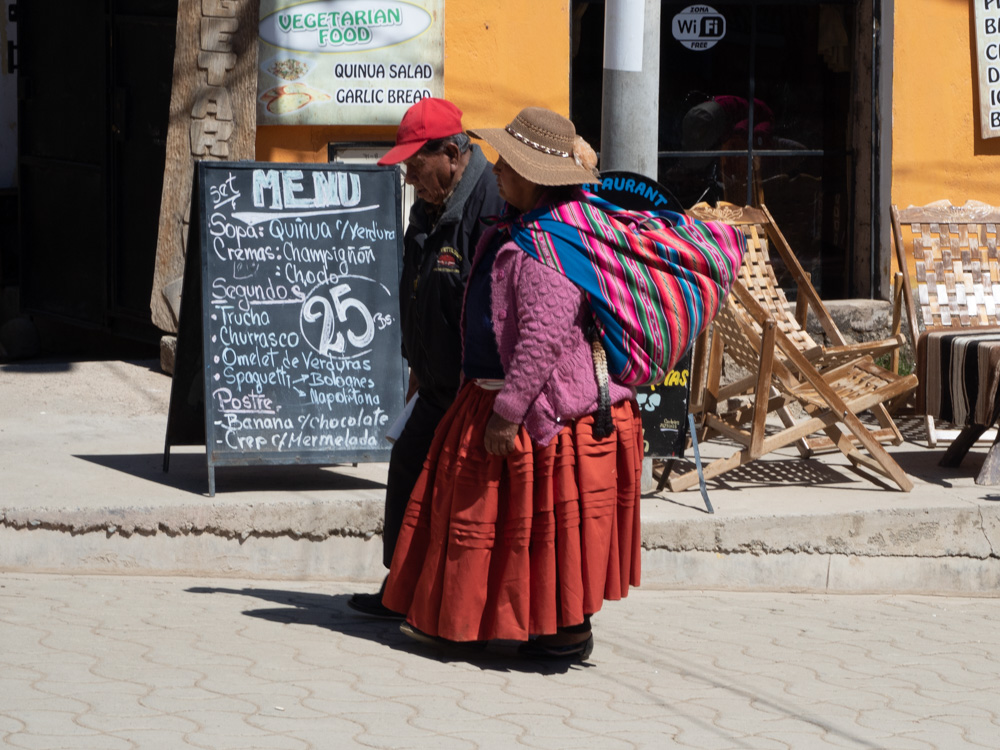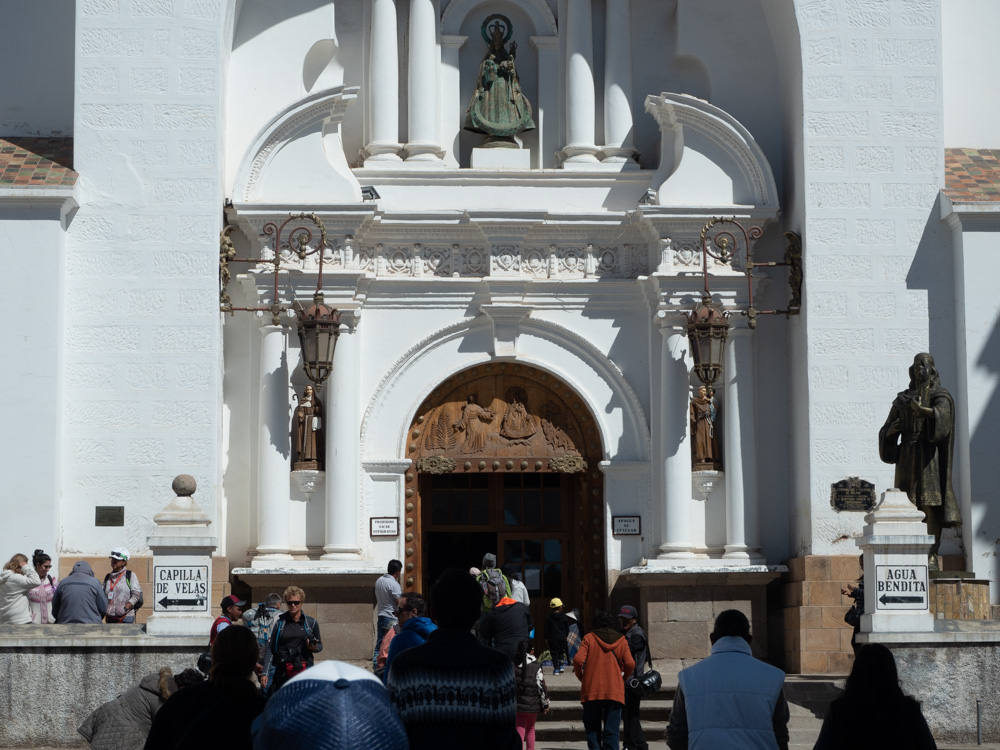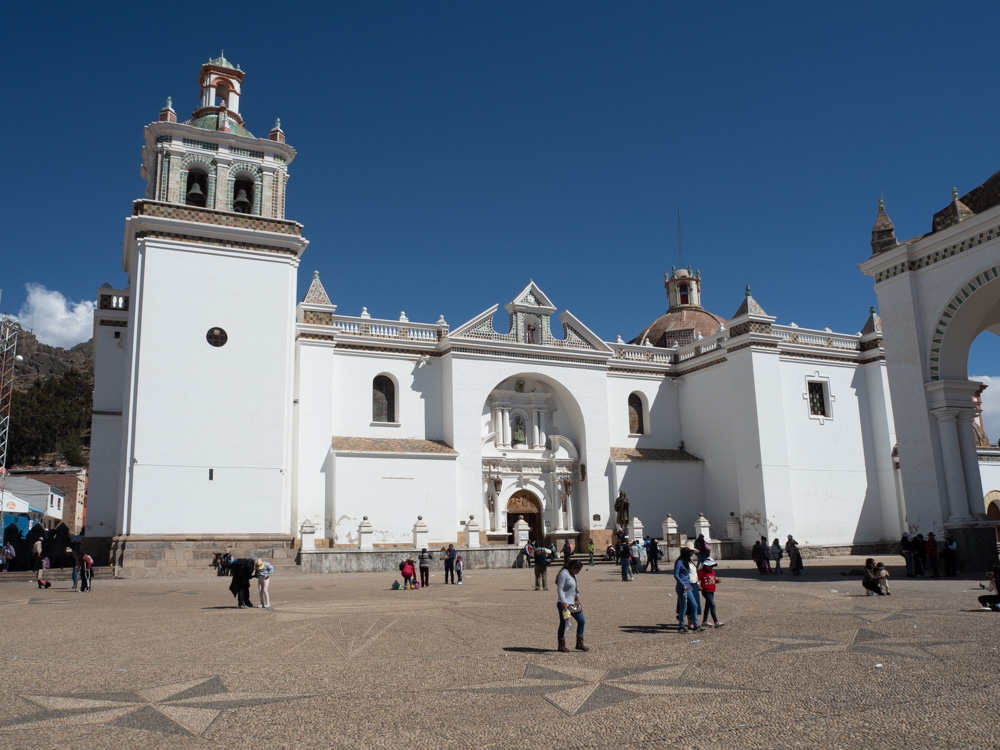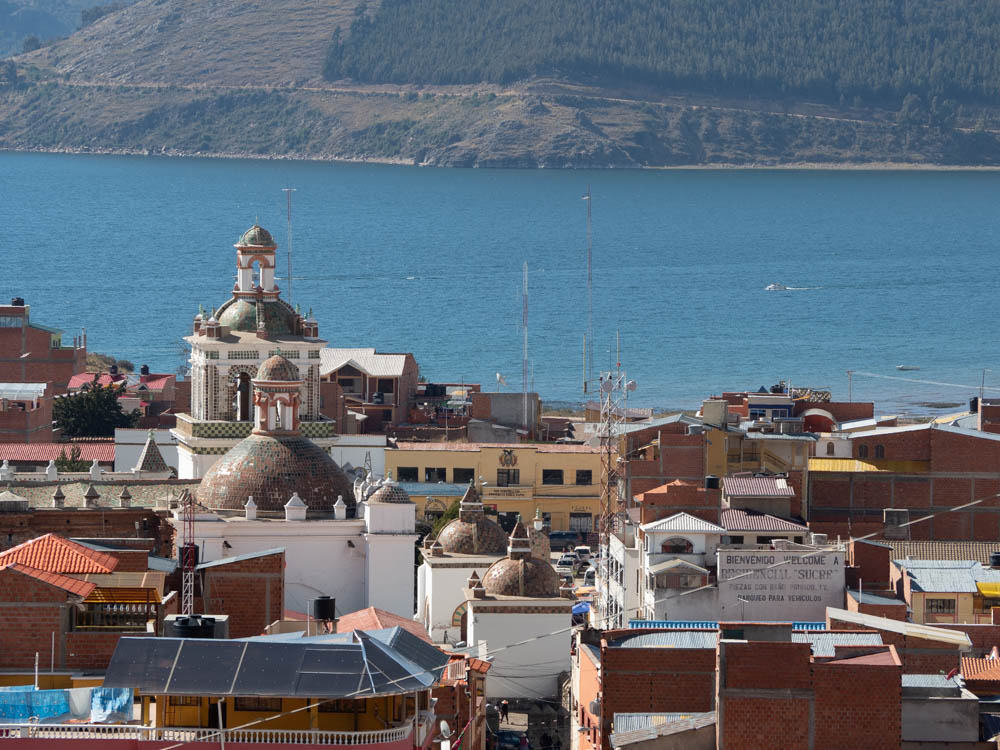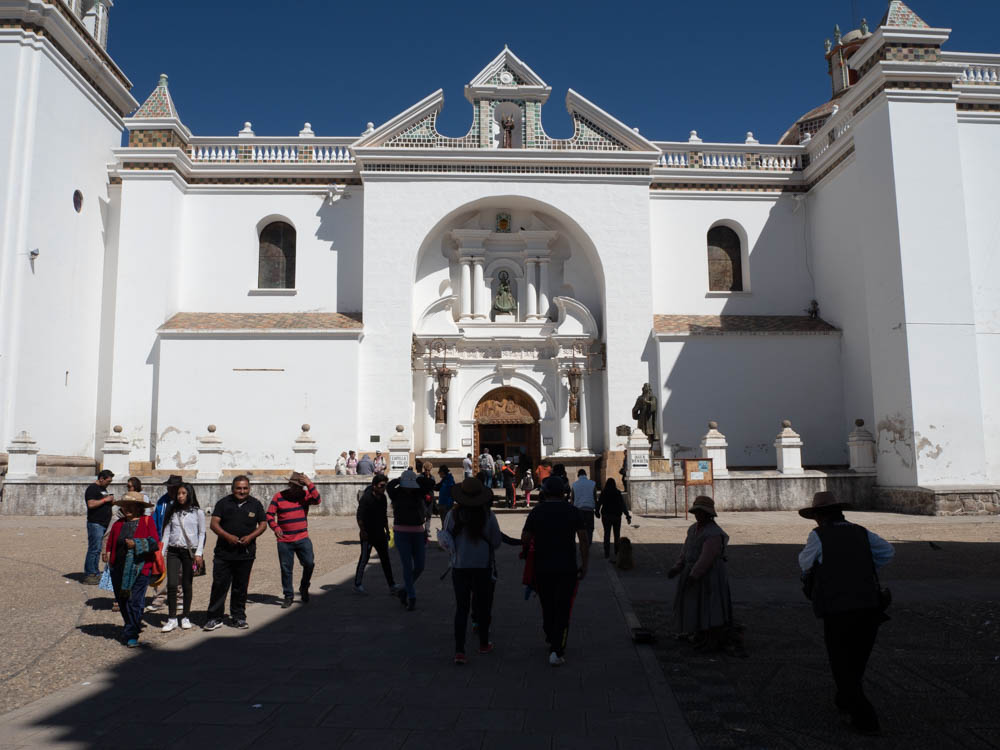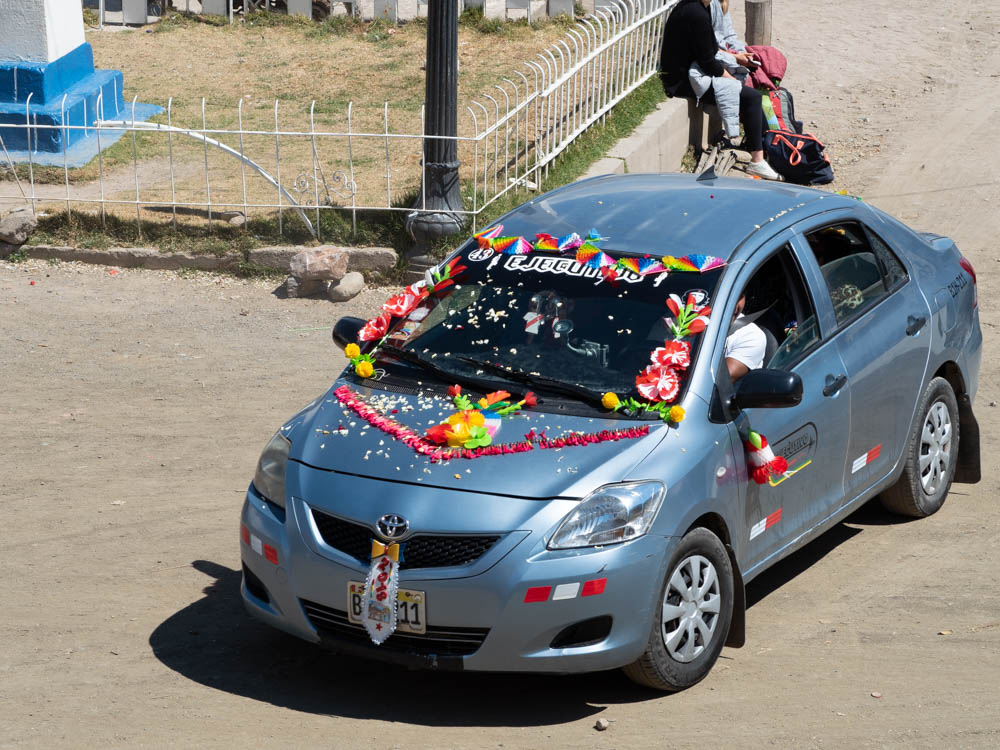Our first night in Copacabana was a cold one. We had specifically picked hostels that listed heat as an option, but as we learned this first night, and reinforced along the way, heat is a relative thing. At our first hostel they provided a small electric room heater and then proceeded to explain that we could only run it twenty minutes at a time. As a city, Copacabana has it’s own electric generator, which has trouble staying at the correct voltage. It typically runs around 180V, instead of the usual 220V, and the lower voltage burns out heaters. Outside it was in the lower 40s, inside it didn’t feel much warmer. To complicate matters, the main blanket on the bed was actually three thick blankets sewn together. Would you like no covers, or covers so heavy it’s difficult to move. Your choice. Enjoy!
The hostel is very unique. It was previously a family home and is being converted to a hostel by the current owner. The artistic nature of everything on the property is a reflection of the entire city of Copacabana.
After a lukewarm shower in the morning, we headed out into the city. We were both feeling some effects of altitude sickness, but Tracy was hit the hardest. So, the plan was to take it easy and walk around the city to check it out. There were many breaks along the way as it was incredibly easy to become winded, especially if there were steps or a hill involved. Not very comforting to say the least.
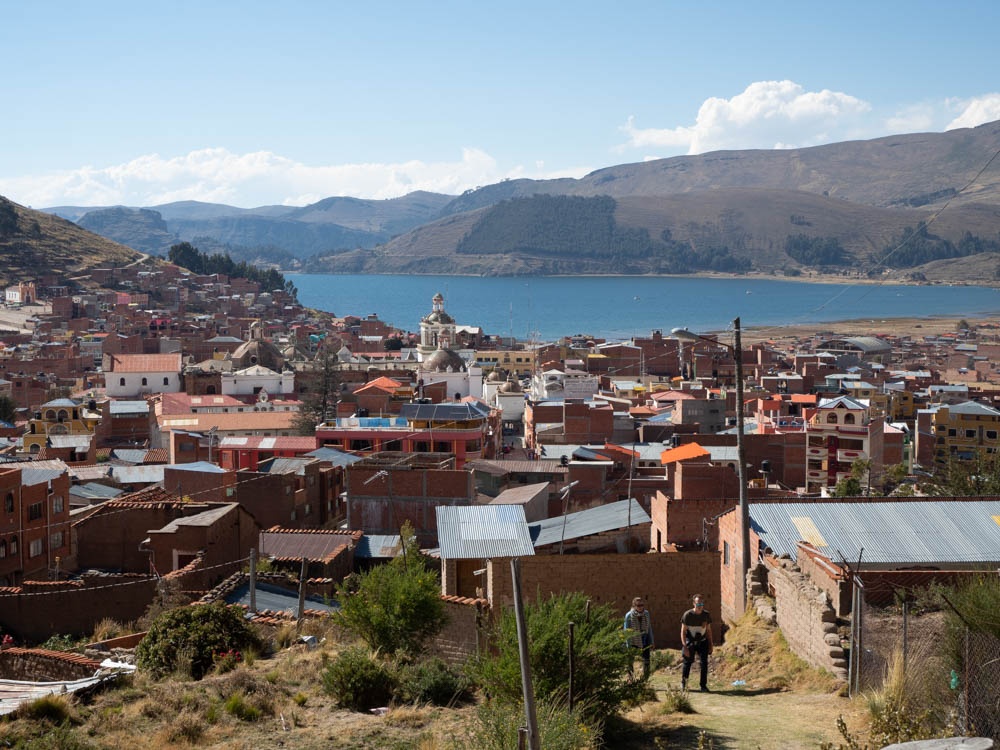
View of Lake Titicaca 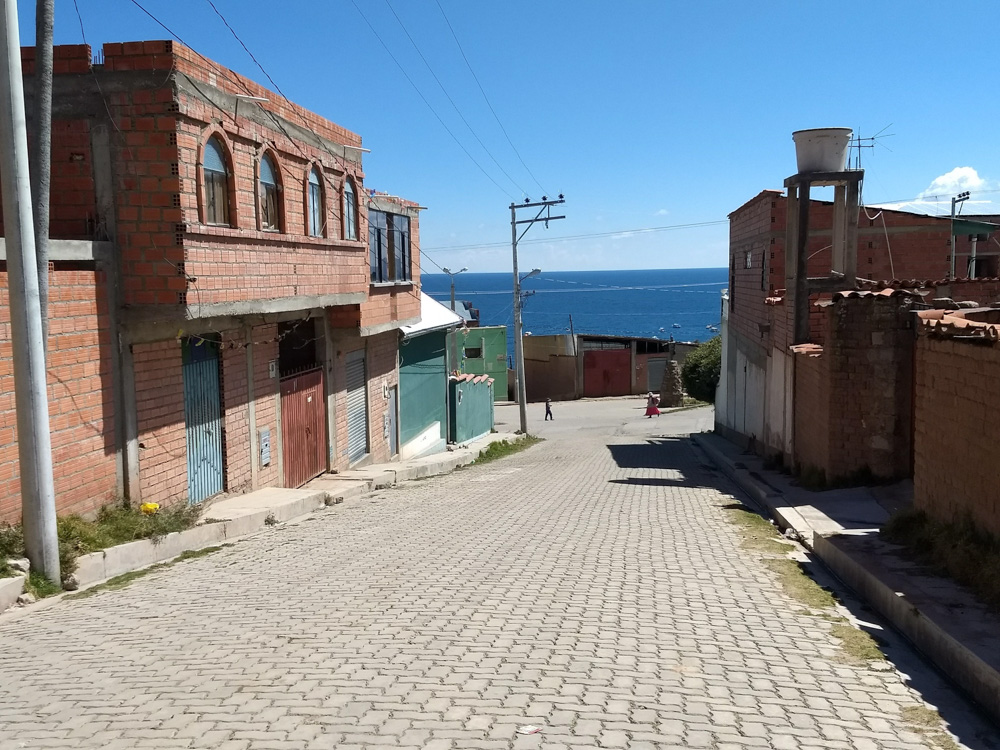
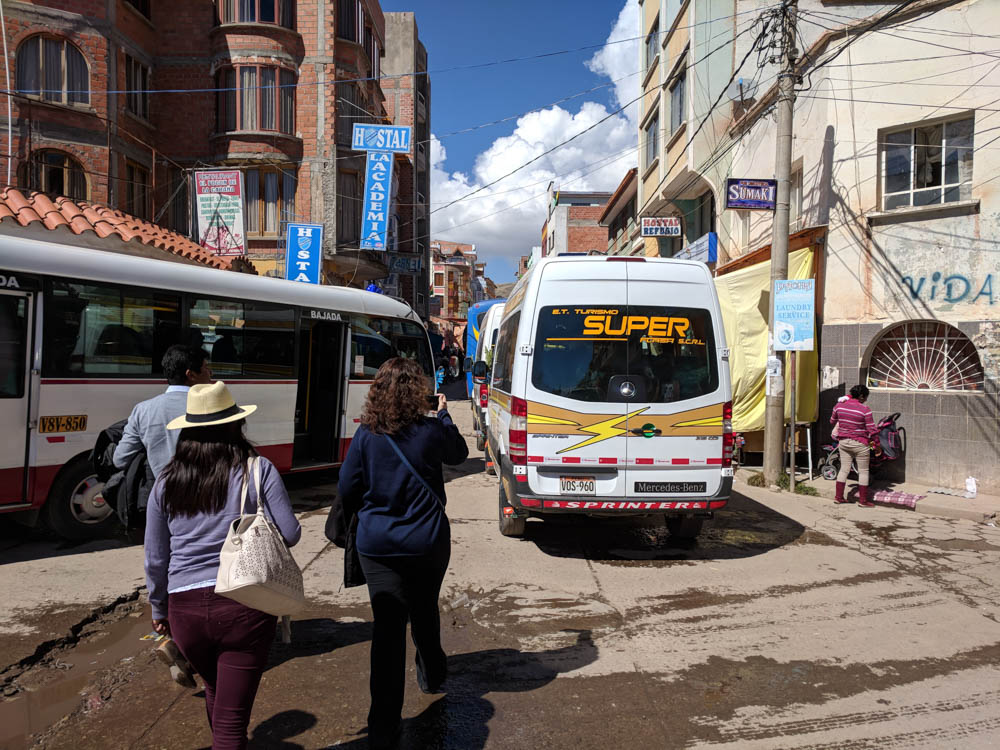
Lots of tourist buses 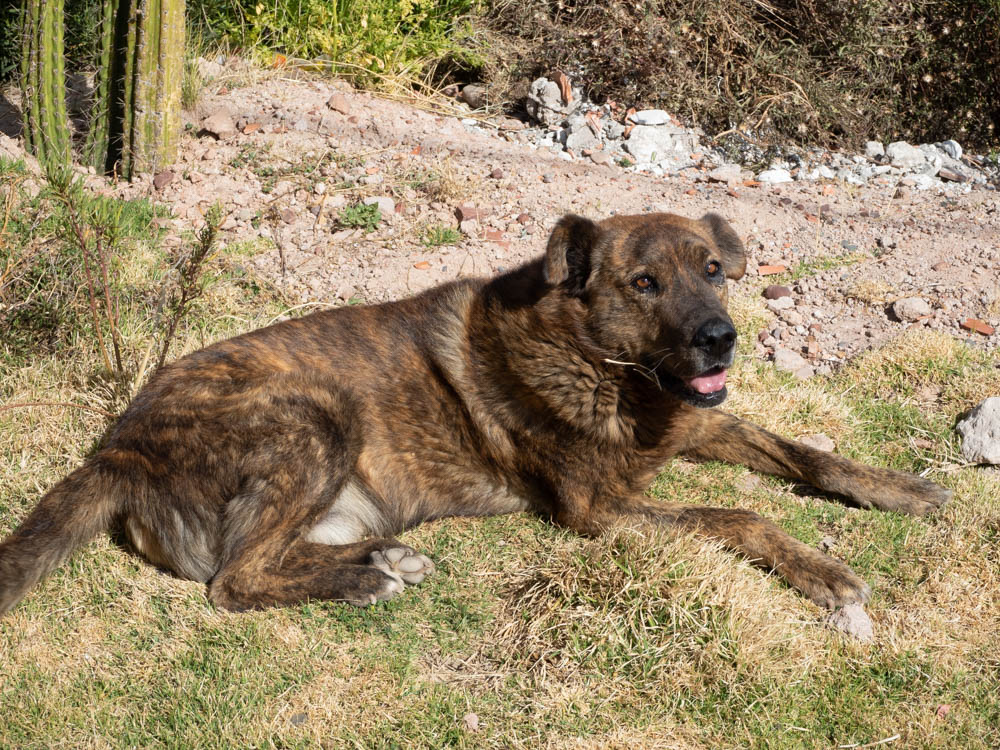
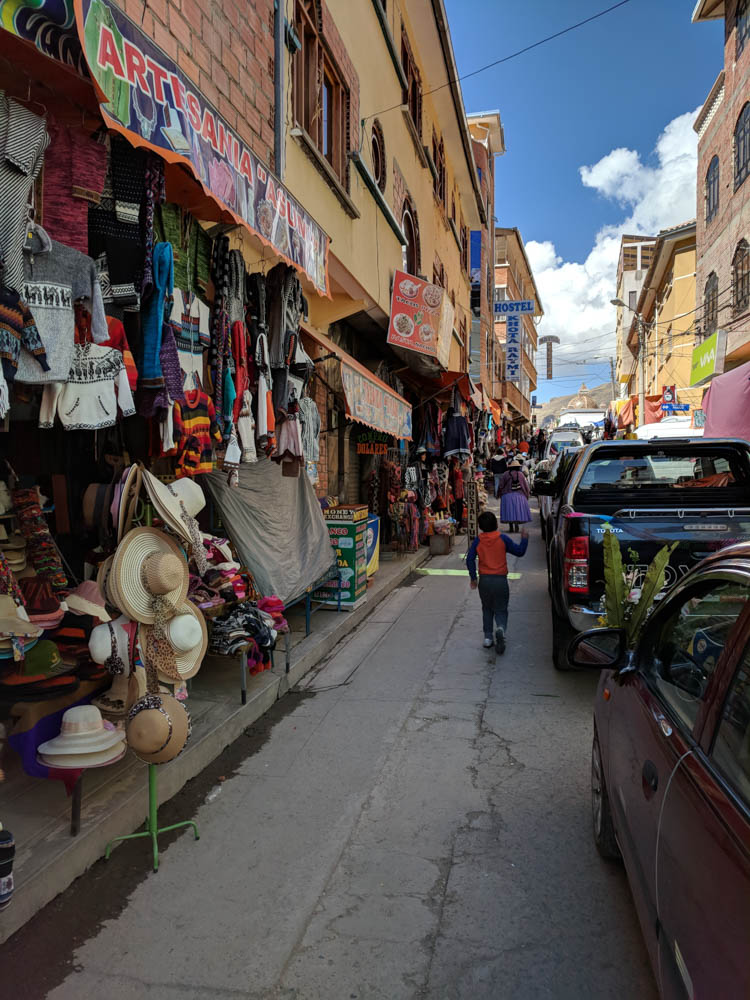
Shops 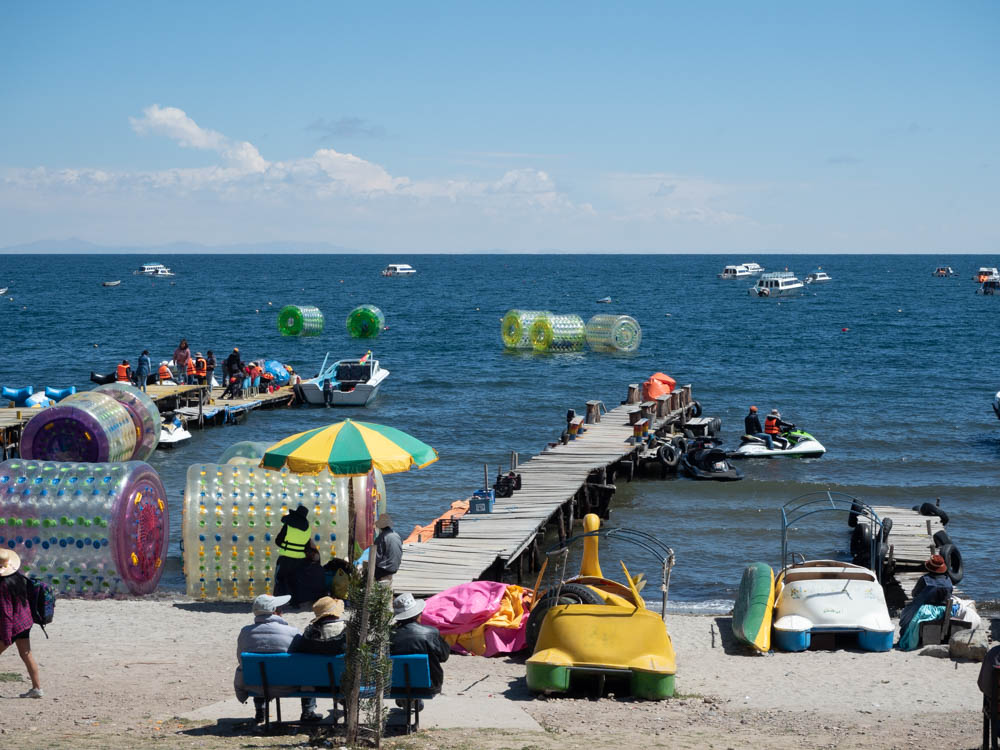
Popular beach 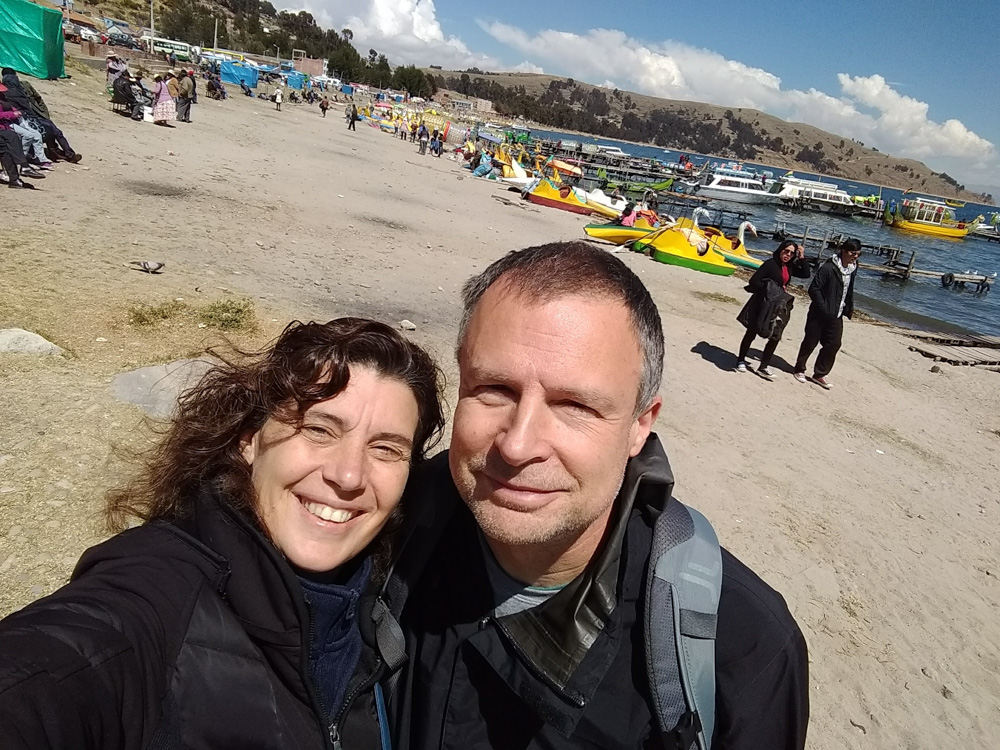
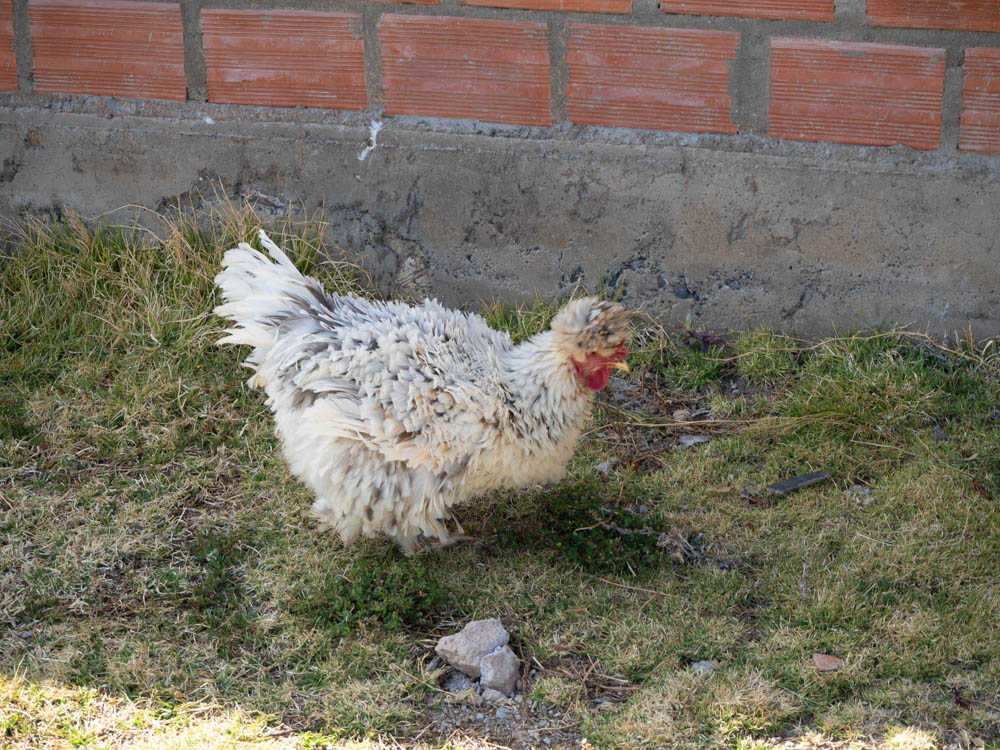
Livestock and farm animals everywhere 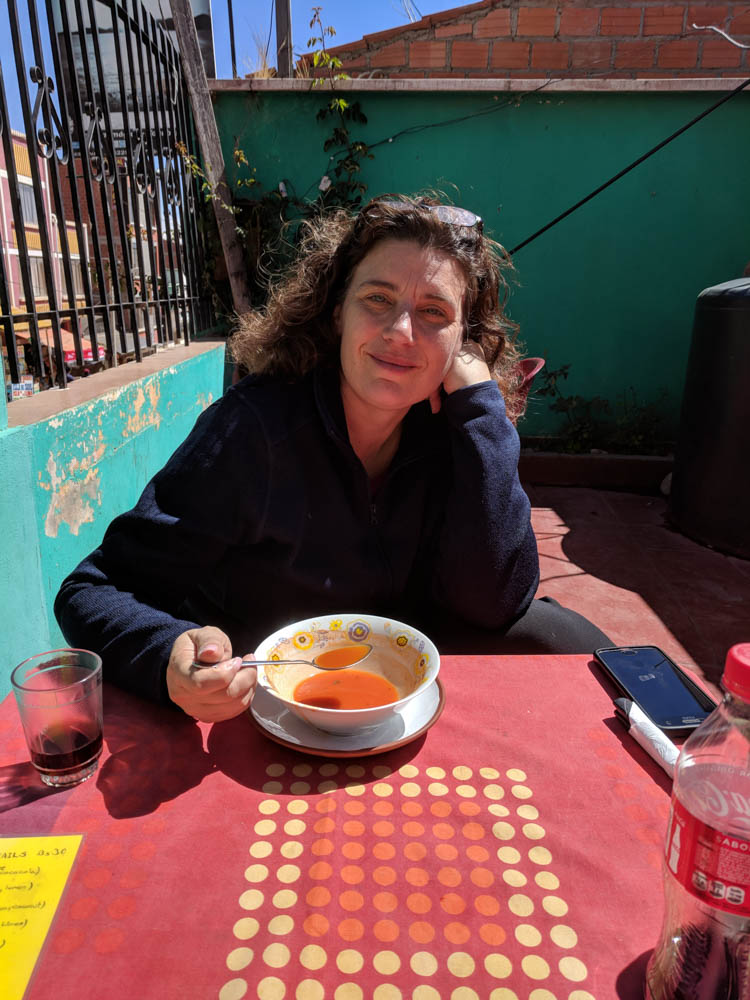
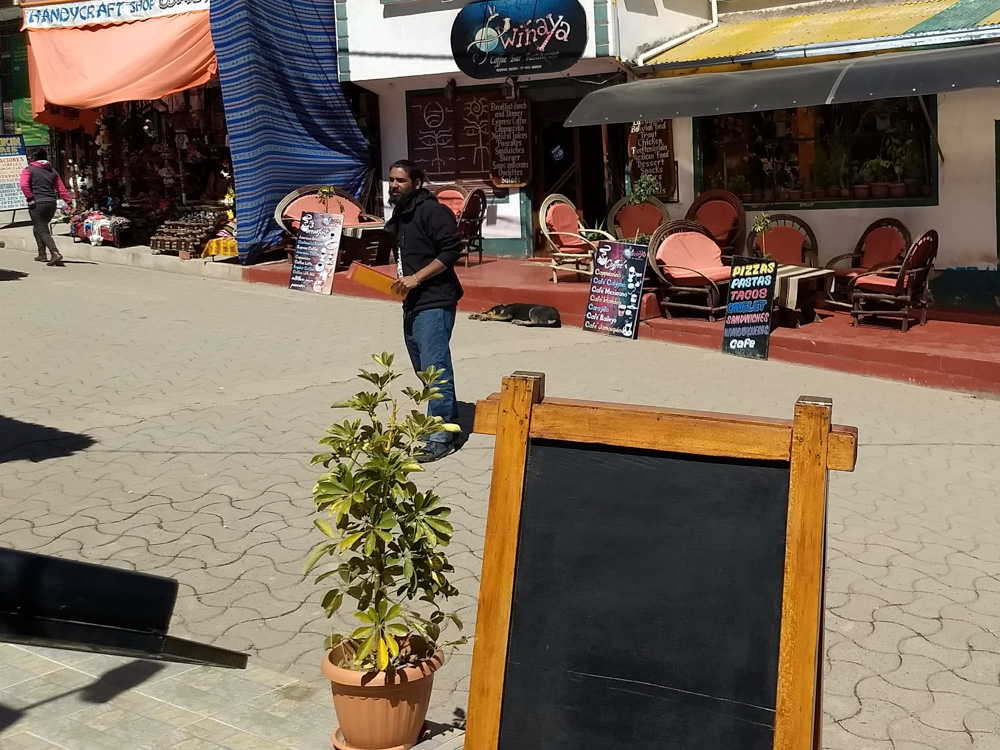
Most restaurants have a “promoter” out front 
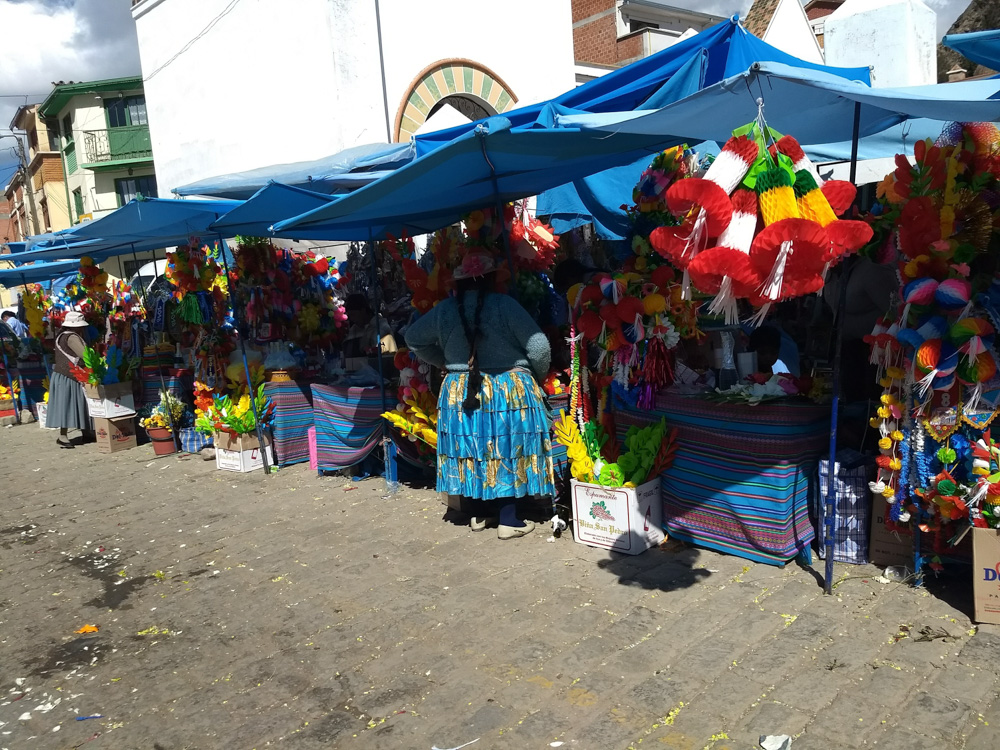
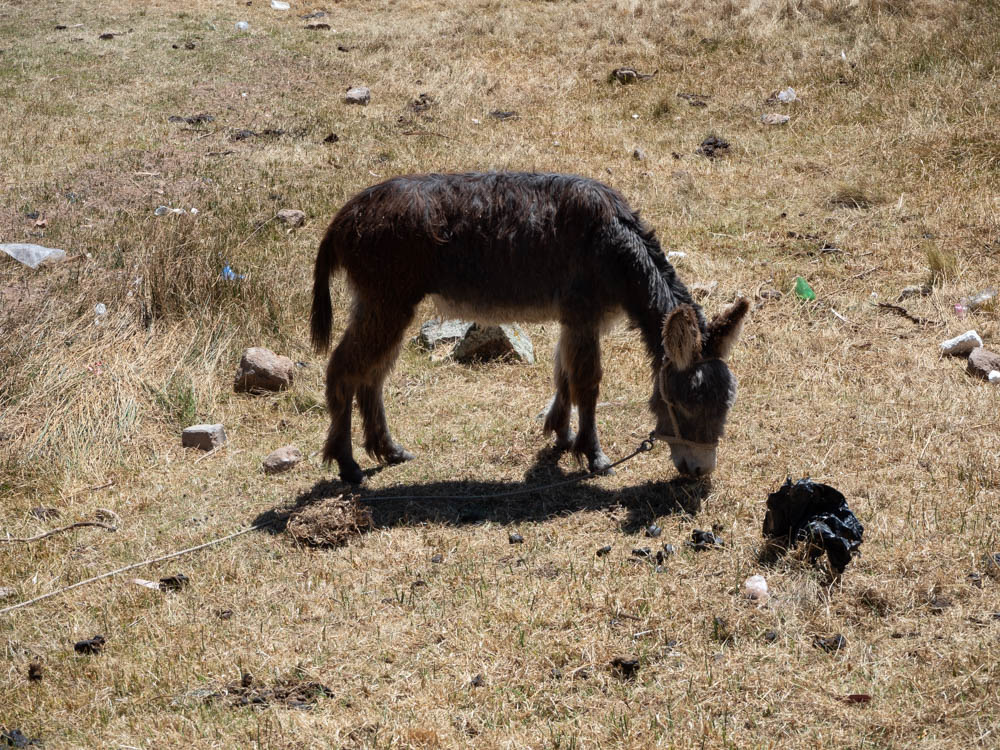
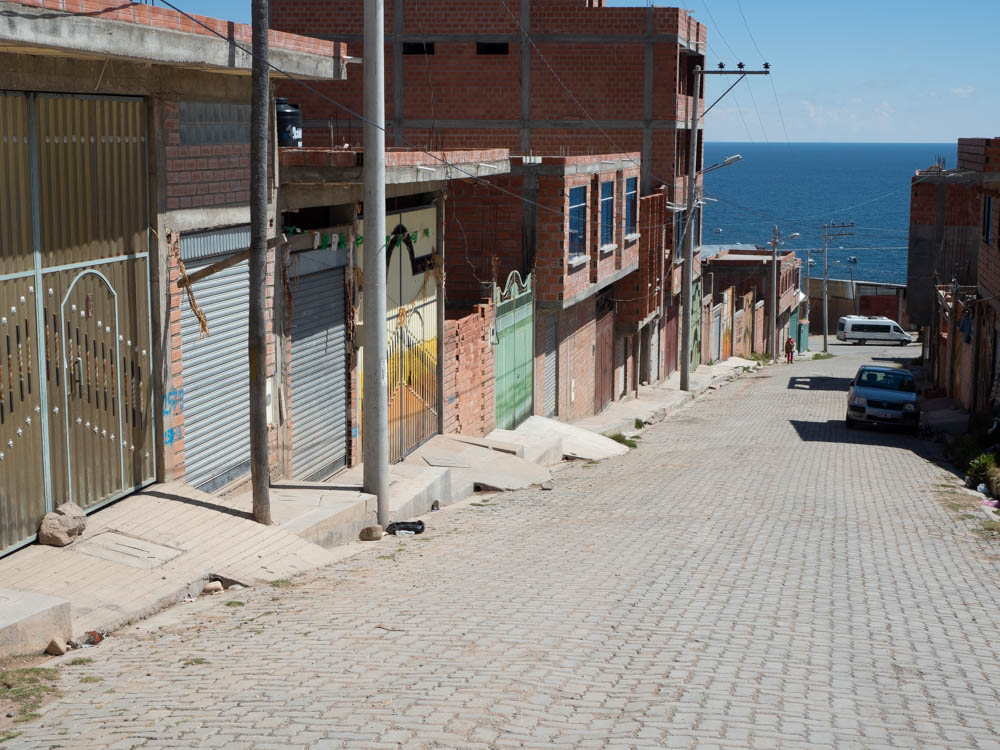
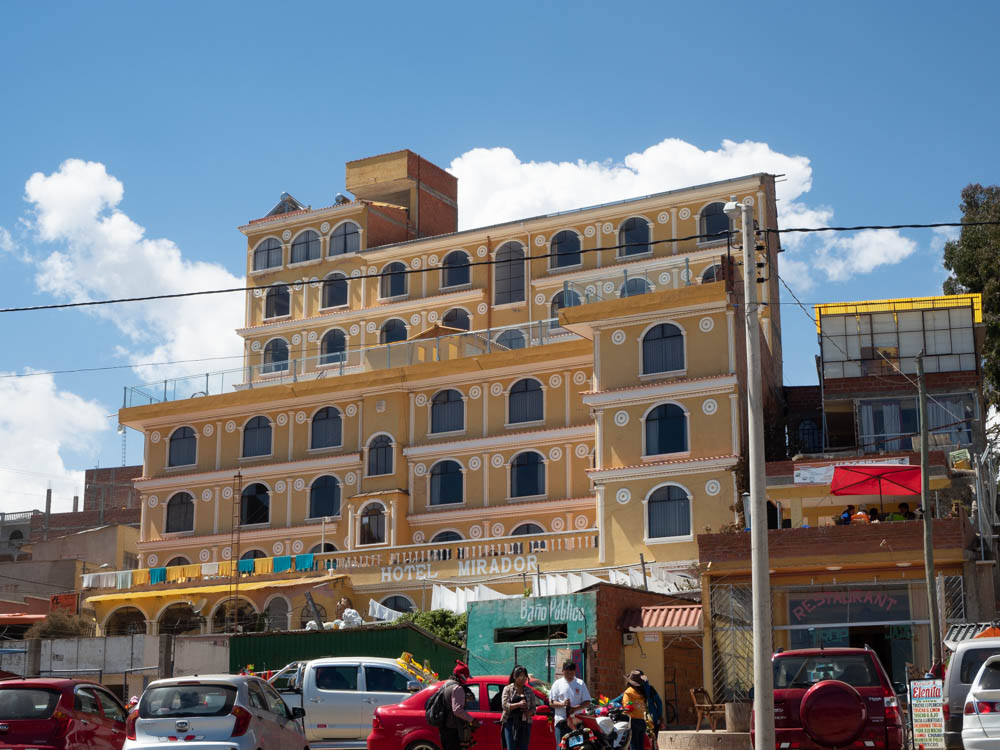
Hotel 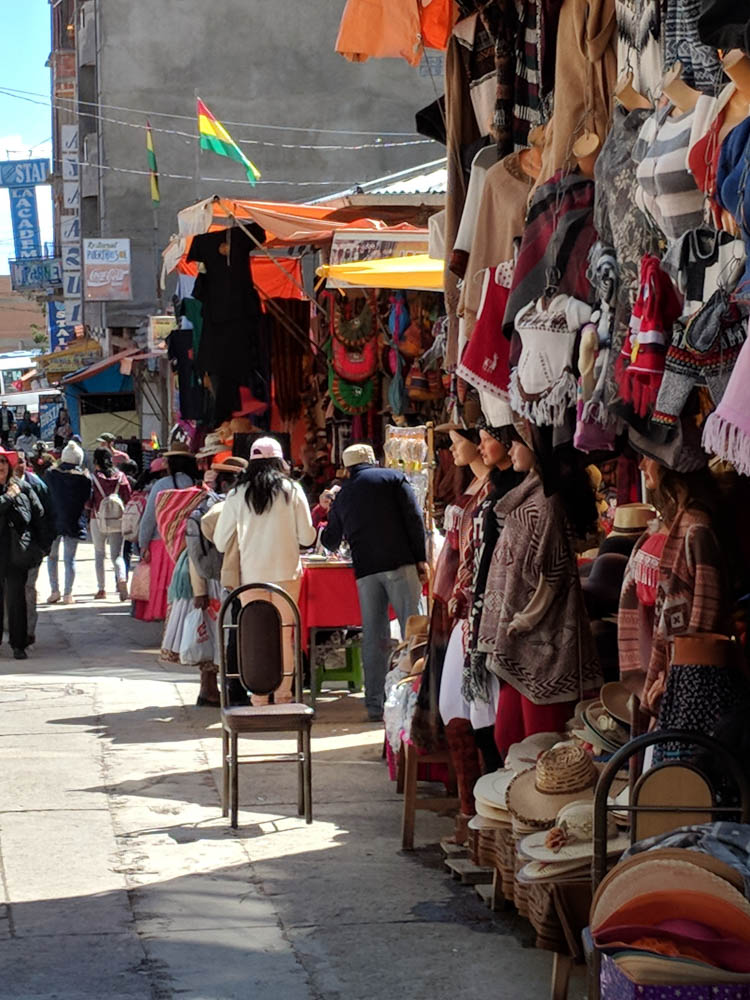
More shops
We saw many women dressed in traditional clothing as we wandered the town.
Along the way we paid a quick visit to the Basilica of Our Lady of Copacabana.
There is an interesting ritual that happens everyday at the church. The church is a shrine to the Virgen de Copacabana who is the patron saint of Bolivia and was said to perform miracles. So, in an attempt to pick up on some of the Saint’s mojo, Bolivians bring their cars to the church to be blessed. First, the owner must decorate their car, and then a priest sprinkles holy water on the car while saying a blessing. The owner then sprays their car with champagne, beer, Coca-Cola, or whatever else they can afford. A round of firecrackers are set off to complete the ceremony and the car is officially blessed. After driving some of the winding roads I can see some merit in the process. A little extra help can’t hurt.
The “take it easy” plan worked well for the first half of the day, but as we were walking back to the hostel we passed a hill called La Horca del Inco that was described as an easy hike. There are some ruins at the top that have an interesting history. When Spanish conquistadors discovered a strange formation high on the hill, they assumed it was a torture device and named it “Horca del Inca”, which translates to “Incan Gallows”. They completely missed the mark. The formation was actually built in the 14th century by pre-Incan Chiripa Indians and is an astronomical observatory. So, I set off up the hill. Thirty minutes and ten rest-breaks later I was close to the top. I waited for Tracy, who had initially made the wise choice to skip the hike but then changed her mind, to catch up with me. While I was waiting a man jumped out from behind a rock and started demanding money if I wanted to go any further. Fortunately, I had internet access on my phone and was able to confirm there was indeed a fee to enter the area with the ruins. It might be better to handle the entry fee collection in a less creepy way though! Tracy caught up, we finished the climb, and the pictures below show the view. Not much in the way of ruins, but the view was beautiful.
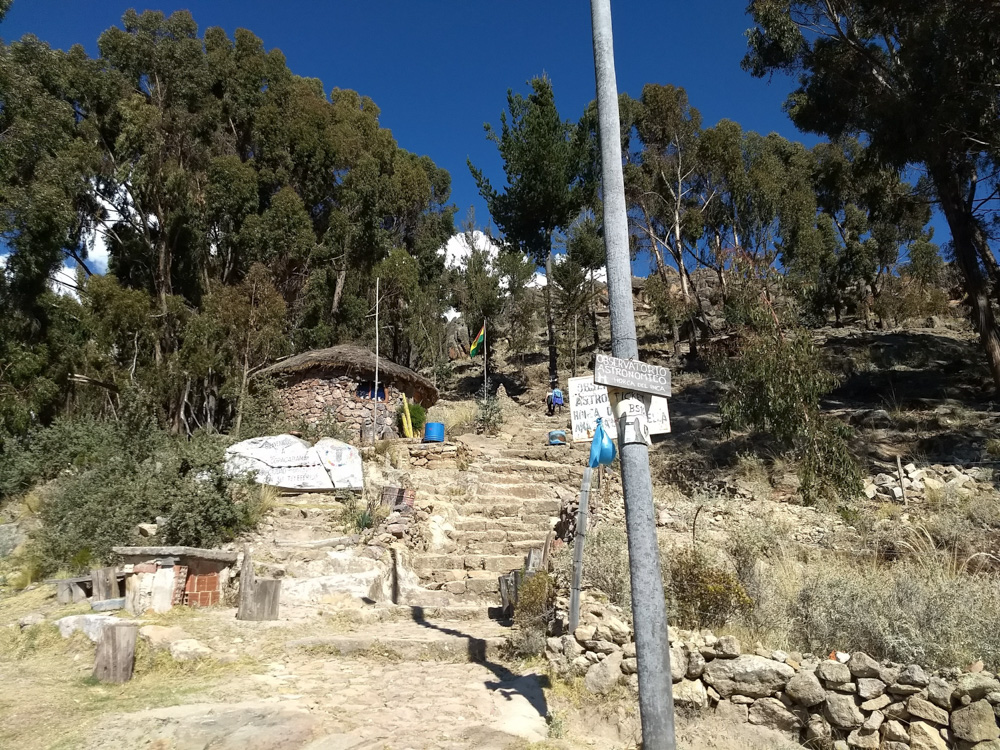
Start of the climb 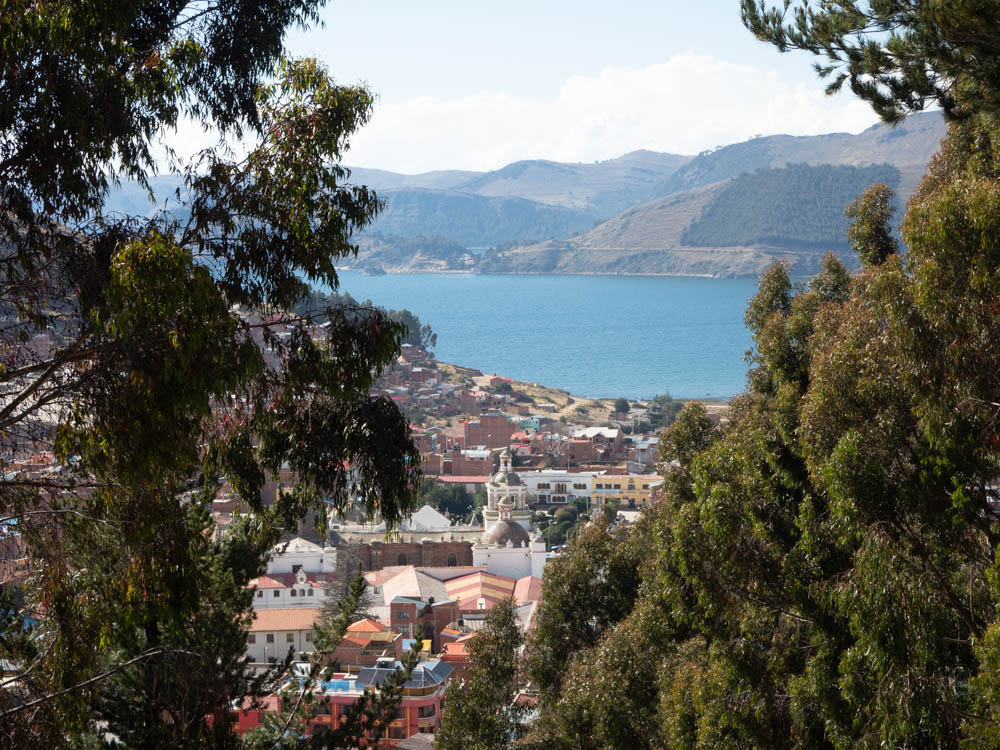
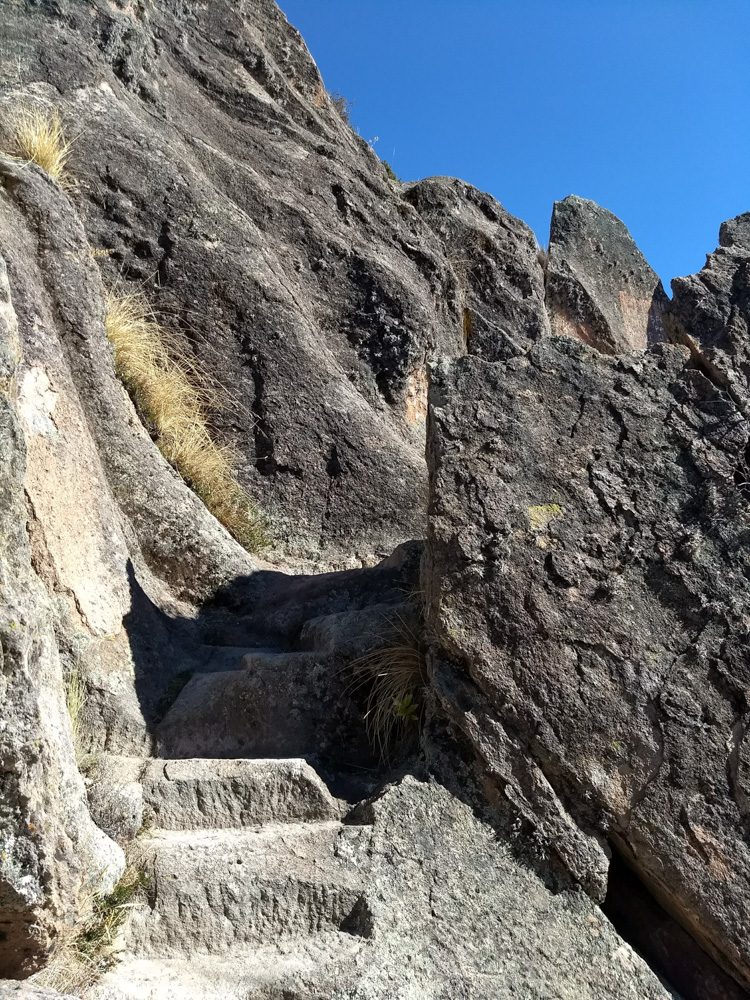
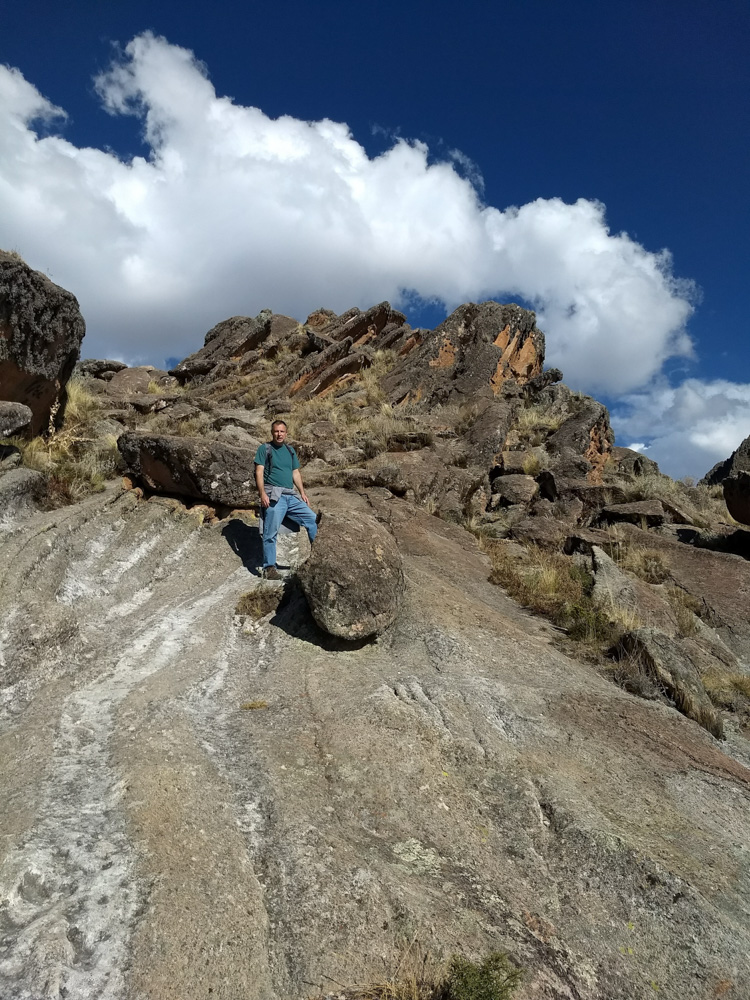
Almost to the top 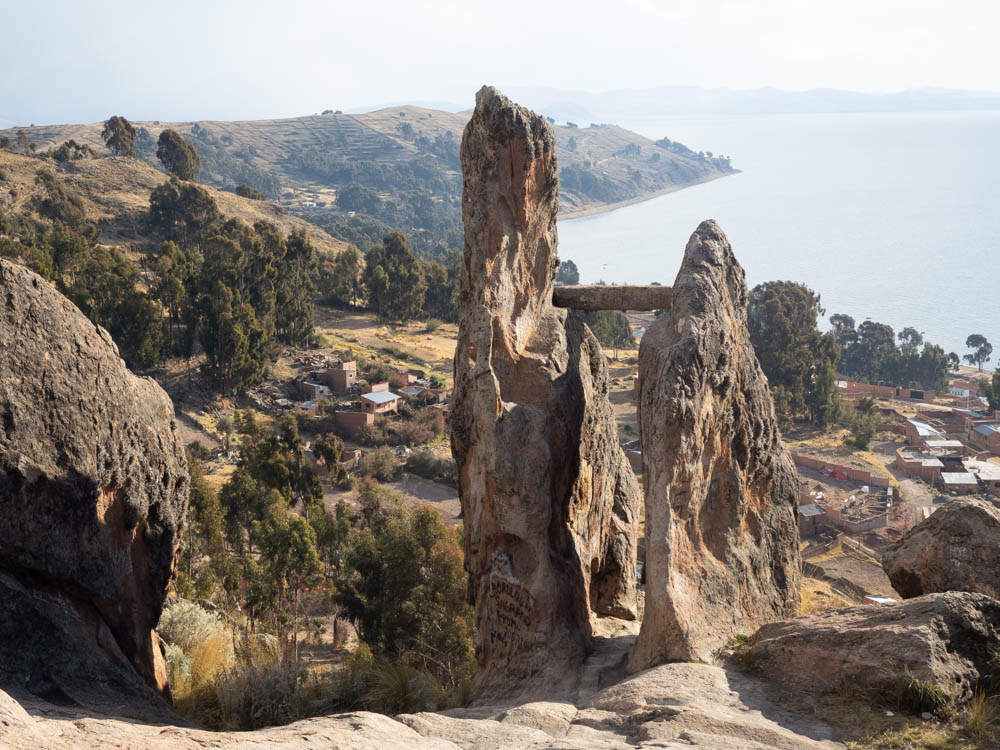
Ruins of the observatory 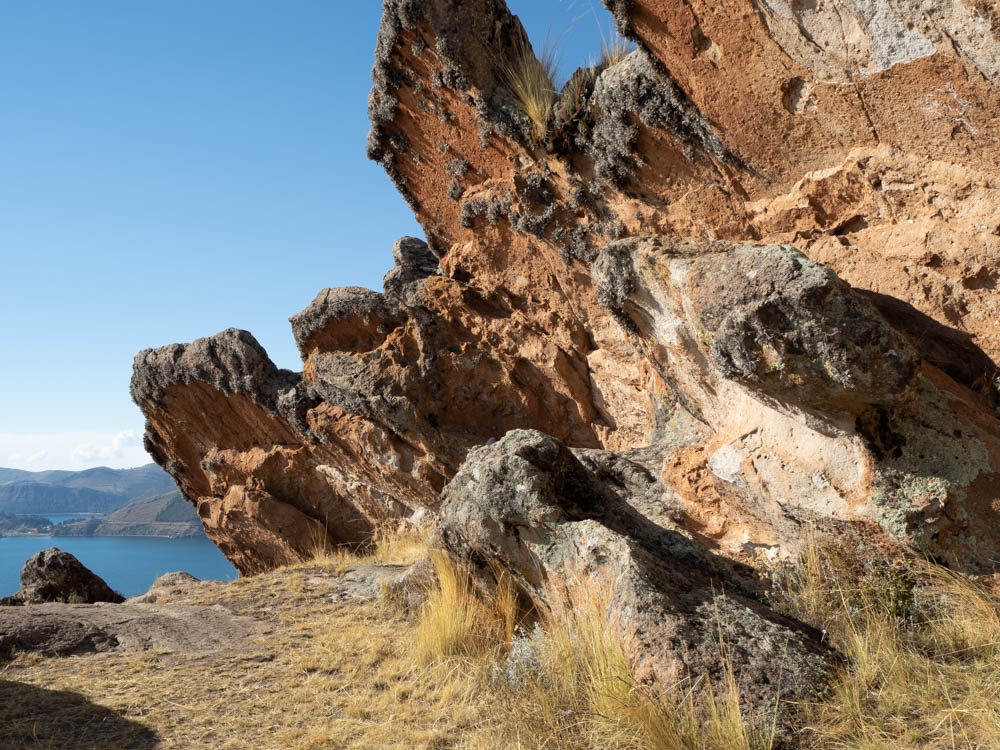
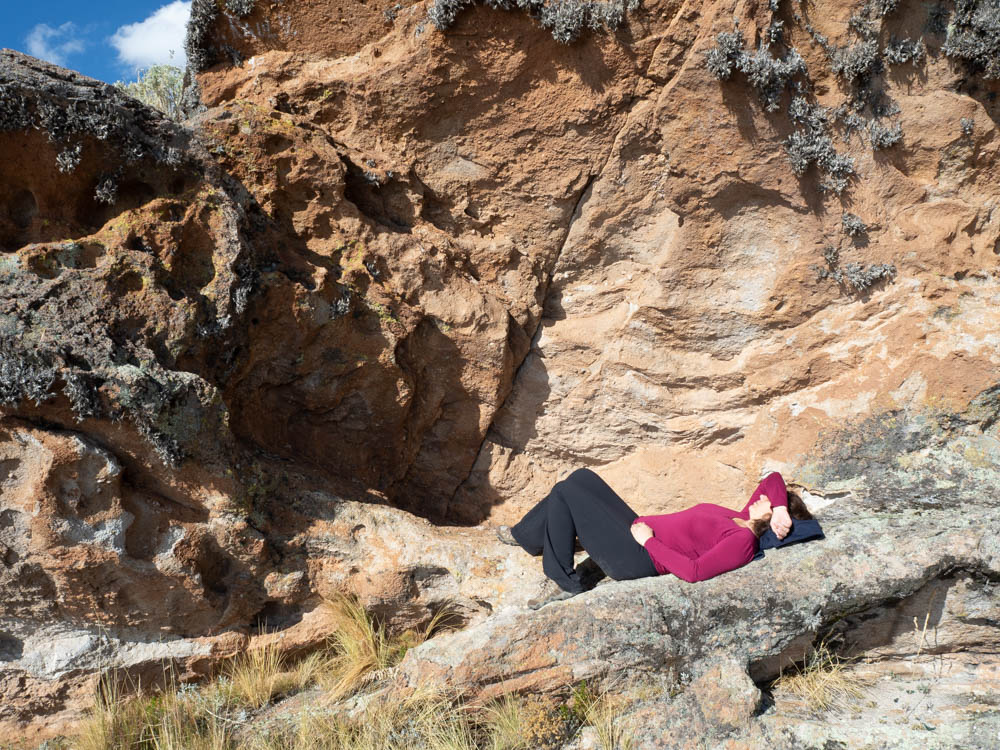
Resting at the top 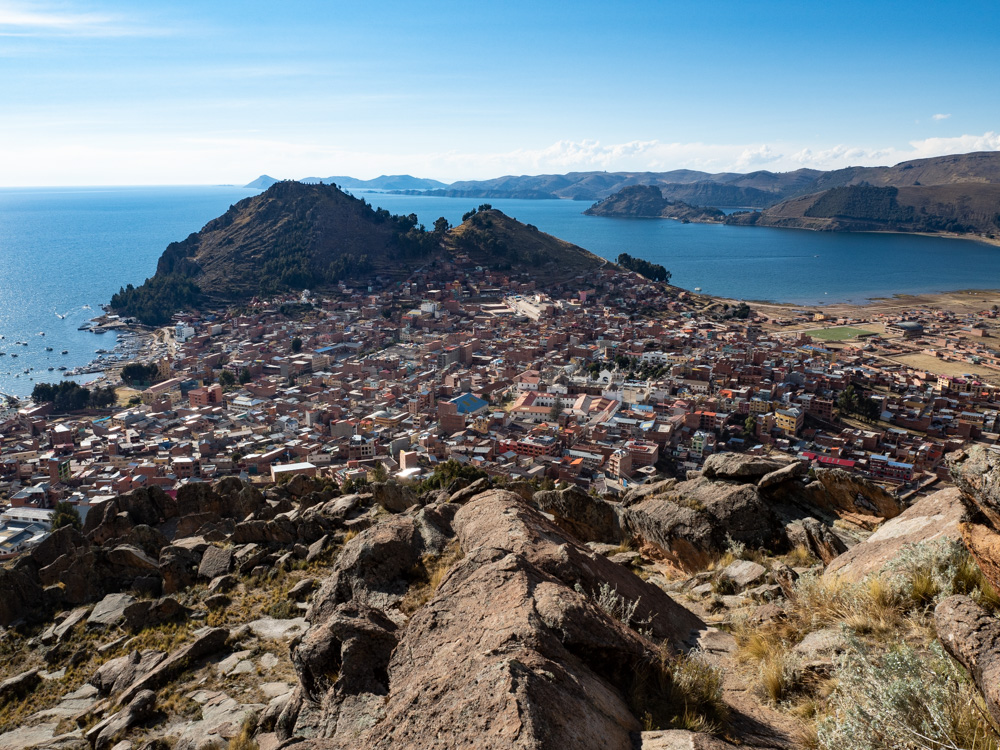
View of Copacabana from the top
As you can imagine, the hike down was much less strenuous. 😊 We were both exhausted, but made it back to the hostel and ordered pizza for delivery.
More fun tomorrow!

